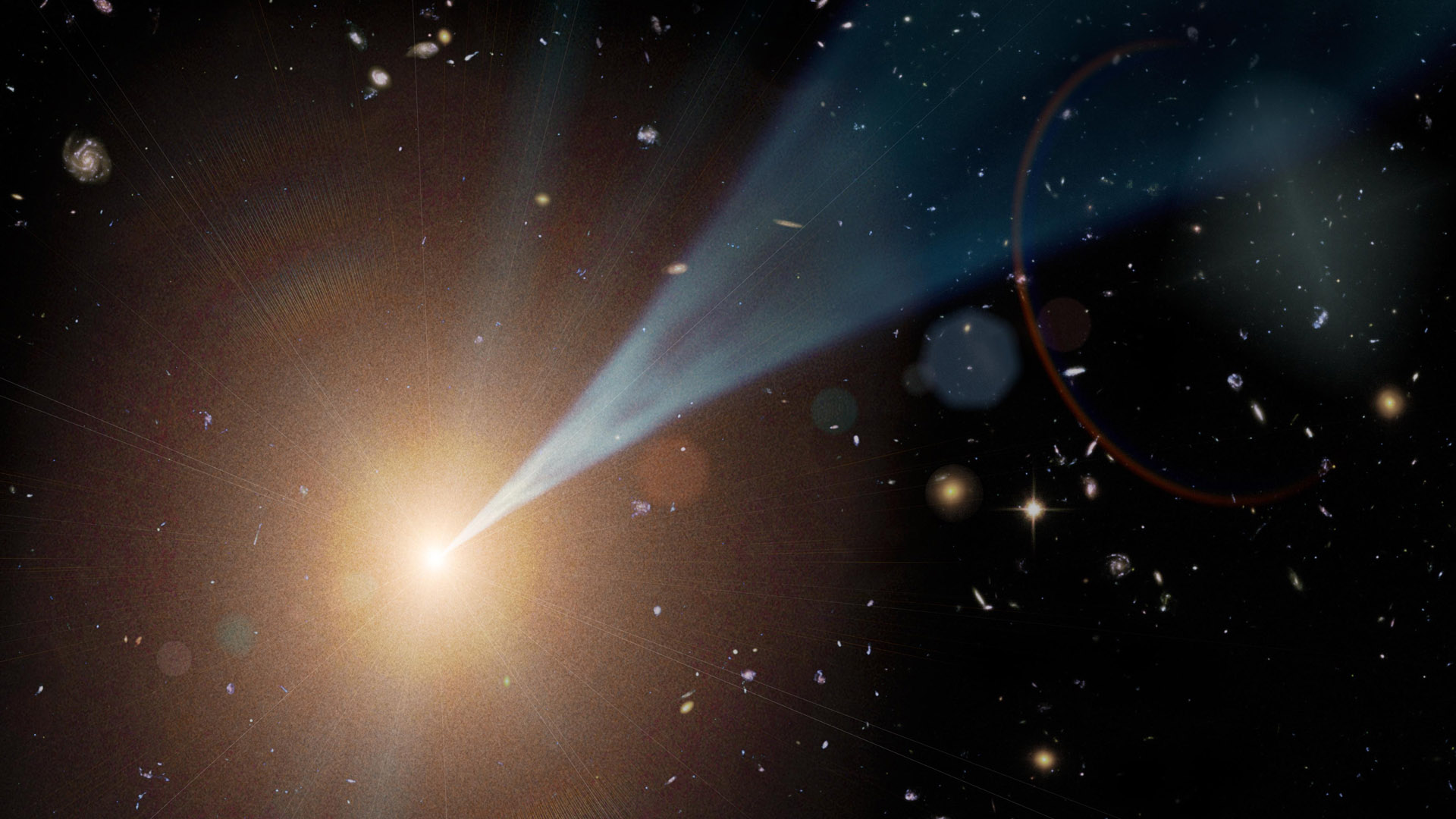Black hole jet changes direction as astronomers watch in cosmic first — and it's aimed right at us
This is "a very exceptional case of jet reorientation," astronomers say.

For the first time, astronomers have spotted a jet blasting from the core of a distant galaxy that has changed directions.
About 1% of the supermassive black holes, which reside at the center of most galaxies, have disks of gas and dust swirling around them. Debris from this disk that ventures toward growing black holes blasts out powerful jets at light-like speeds in random directions. These jets push out massive amounts of energy into nearby areas and help shape galaxies over eons, so one of the ways astronomers classify galaxies is based on how such jets are oriented.
For example, when galaxy cores have jets of charged particles beaming out perpendicularly when seen from Earth, they are called quasars. Sometimes, jets are aimed directly at Earth, and such galaxy cores are called blazars. While astronomers know that quasars and blazars exist, the latest finding is the first time they have observed a galaxy in the former group transform into the latter.
Related: 'Neutrino factories' could hold the solution to the cosmic ray mystery
The finding comes from a distant galaxy named PBC J2333.9-2343, whose core had blasted jets in the past but had long gone quiet. In the latest research, astronomers found that the core had once again stirred the jets back to life, one of which had "drastically" changed directions. The galaxy, which spans four million light-years and is located about 656 million light-years away from Earth, shines strongly in radio wavelengths and is thus called a radio galaxy. Given the sharp change in the jet's orientation, astronomers have redefined the giant radio galaxy into one with a blazar at its center.
"We started to study this galaxy as it showed peculiar properties," Lorena Hernández-García, an astronomer at the Millenium Institute of Astrophysics in Chile and the study's lead author, said in a statement. "Our hypothesis was that the relativistic jet of its supermassive black hole had changed its direction, and to confirm that idea we had to carry out a lot of observations."
So Hernández-García's team studied the galaxy across the entire electromagnetic spectrum — including radio, optical, infrared, X-ray, and ultraviolet wavelengths, and found that one of the jets that was perpendicular to our line of sight changed its direction by 90 degrees so it now faces Earth. This is "a very exceptional case of jet reorientation" and warranted redefining the galaxy, astronomers say.
Breaking space news, the latest updates on rocket launches, skywatching events and more!
While galaxies are classified based on orientation of jets, why they change directions is not very well understood. Few astronomers speculate that mergers of galaxies or black holes contribute to the intermittent bursts of jet activity, and that directions of the jets change between bursts.
Such activity is not surprising, since astronomers already know that bright but rare X-shaped galaxies, whose notable X-shape arises from similar erratic behavior of jets, behave similarly. The team behind the latest study suspects that the PBC J2333.9-2343 galaxy is X-shaped too: "We do not see the X-shape, but this can be explained because the new jets are, by chance, pointing towards us," the authors write in their study.
This research is described in a paper published March 20 in the journal Monthly Notices of the Royal Astronomical Society.
Follow Sharmila Kuthunur on Twitter @Sharmilakg. Follow us @Spacedotcom, or on Facebook and Instagram.

Sharmila Kuthunur is an independent space journalist based in Bengaluru, India. Her work has also appeared in Scientific American, Science, Astronomy and Live Science, among other publications. She holds a master's degree in journalism from Northeastern University in Boston.
